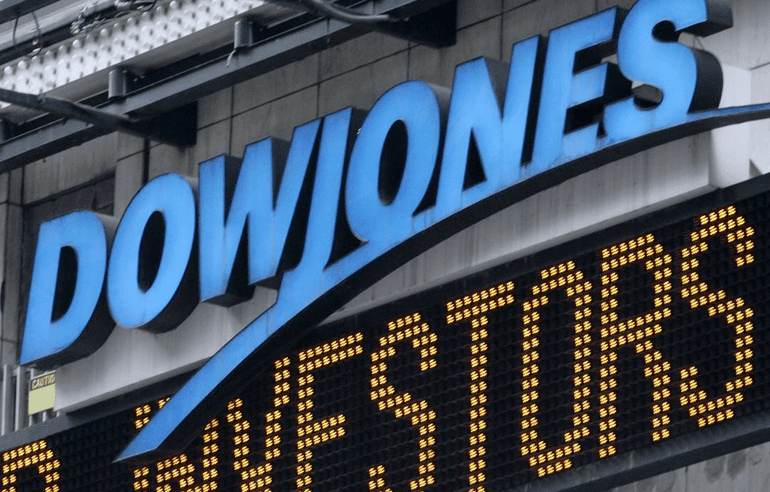The Dow Jones Industrial Average notched five consecutive weekly increases during November, something the blue chip index last did in 2021.
The Dow Jones Industrial Average (^DJI -0.22%) measures the performance of 30 large U.S. companies. Inclusion generally requires an excellent reputation, sustained growth, and widespread interest among investors. To that end, the index is often seen as a collection of blue chip stocks.
The Dow Jones notched five consecutive weekly increases during November, its longest winning streak since late 2021. That trend is noteworthy because stock market momentum has a way of snowballing, but what truly matters is the driving force behind that momentum. In this case, a wave of positive economic data sent the Dow Jones higher last month.
The Federal Reserve has increased interest rates at their fastest pace in four decades to tame inflation. That aggressive monetary policy has kept investors on edge, as tightening credit conditions too far could tip the economy into a recession. But data published in November showed that inflation, wages, and jobs growth continued to slow in October.
Those trends could keep the Fed from raising rates any further, and the end of rate hike cycles has historically coincided with significant gains in the stock market.
History says the Dow Jones Industrial Average could increase 16% by July 2024
The Federal Reserve started using the federal funds rate as a monetary policy tool in 1982, and the central bank has steered the economy through six rate hike cycles since then. Interestingly, the Dow Jones Industrial Average has consistently increased during the 12-month period following the end of those cycles, returning an average of 18.3%.
The chart below provides specific details on the returns following each rate hike cycle.
| RATE HIKE CYCLE END DATE | DOW JONES 12-MONTH RETURN |
|---|---|
| Aug. 9, 1984 | 7.9% |
| Feb. 24, 1989 | 14.2% |
| Feb. 1, 1995 | 40.5% |
| May 16, 2000 | 2.6% |
| June 29, 2006 | 19.8% |
| Dec. 20, 2018 | 24.5% |
| Average | 18.3% |
DATA SOURCE: FEDERAL RESERVE BANK OF ST. LOUIS, YCHARTS.
For context, Fed policymakers last raised interest rates on July 26, 2023, and the Dow Jones has increased about 2% since that time. That means the index could climb another 16% by the end of July 2024 if its performance aligns with the historical average.
However, the Dow Jones is a relatively narrow financial index, meaning its performance may not be indicative of the overall stock market. So let’s take a look at the broader S&P 500 (^GSPC -0.06%).
History suggests the S&P 500 could increase 17% by July 2024
The S&P 500 includes the 30 blue chip stocks in the Dow Jones, but it also tracks another 470 stocks, bringing the total count to 500 U.S. companies. That makes the index a better barometer for the overall U.S. stock market.
The S&P 500 increased during the 12-month period following five of the six rate hike cycles since 1982, with an average return of 16.5%, as shown in the chart below.
| RATE HIKE CYCLE END DATE | S&P 500 12-MONTH RETURN |
|---|---|
| Aug. 9, 1984 | 13.8% |
| Feb. 24, 1989 | 12.9% |
| Feb. 2, 1995 | 35.7% |
| May 16, 2000 | (12.4%) |
| June 29, 2006 | 18.1% |
| Dec. 20, 2018 | 30.6% |
| Average | 16.5% |
DATA SOURCE: FEDERAL RESERVE BANK OF ST. LOUIS, YCHARTS.
The S&P 500 has traded sideways since the Fed last raised interest rates in July. If this credit cycle follows the trend of recent cycles, them the index could increase about 17% by the end of July 2024 if its performance aligns with the historical average.
Of course, past results are never a guarantee of future performance. But even if the Dow Jones and the S&P 500 break with historical precedent following this particular rate hike cycle, history says both indexes are headed higher in the long run.
Where should investors put their money today?
Readers may be wondering why the end of a rate hike cycle would move the stock market higher. The answer is simple: Once the Fed puts an end to rate hikes, the next logical step is rate cuts, and looser credit conditions promote economic growth.
Investors hoping to capitalize on the possible upward momentum in the stock market should consider buying a Dow Jones index fund or an S&P 500 index fund. Both financial indexes have consistently created wealth over long periods of time. The Dow Jones returned 186% over the last decade, while the S&P 500 returned 208%.

